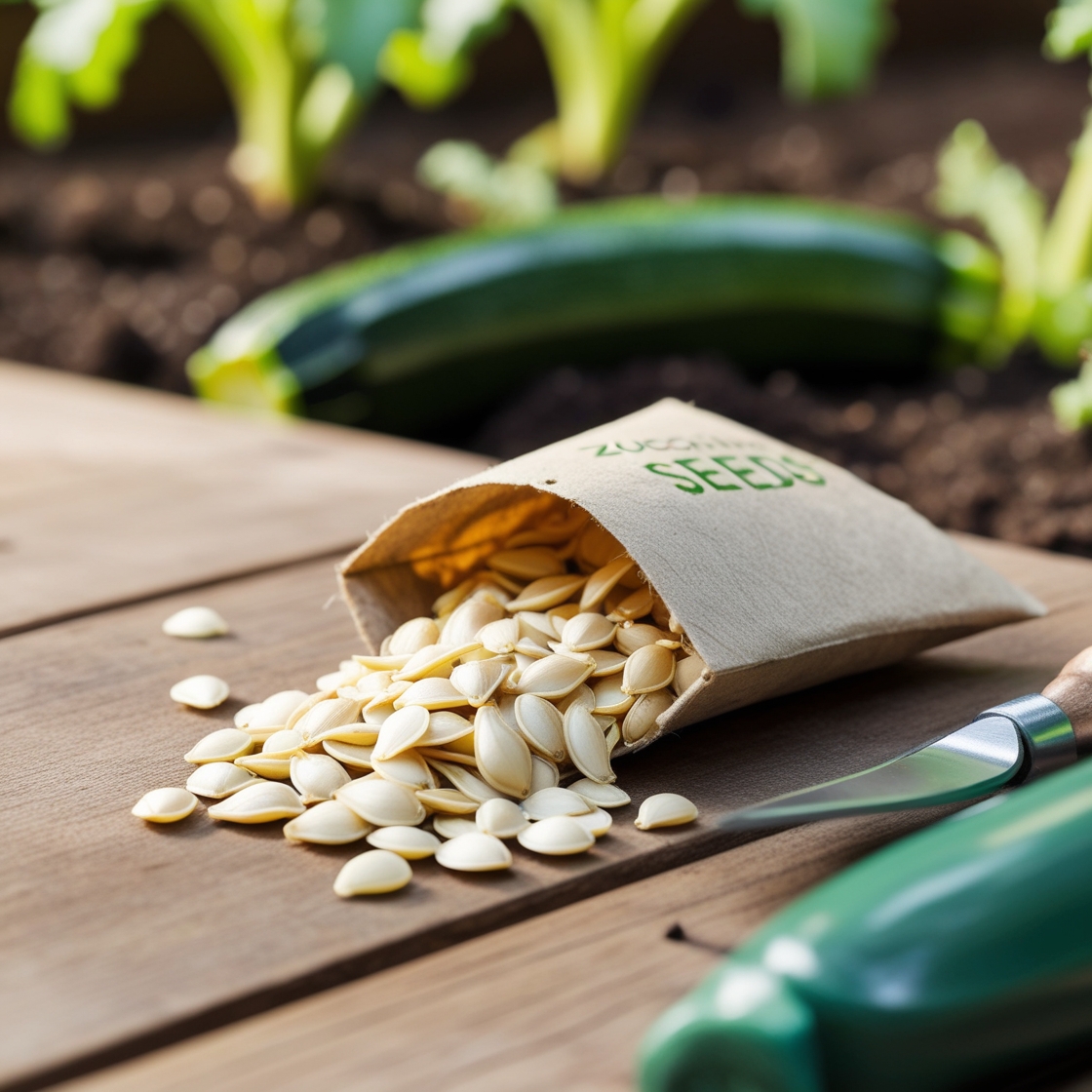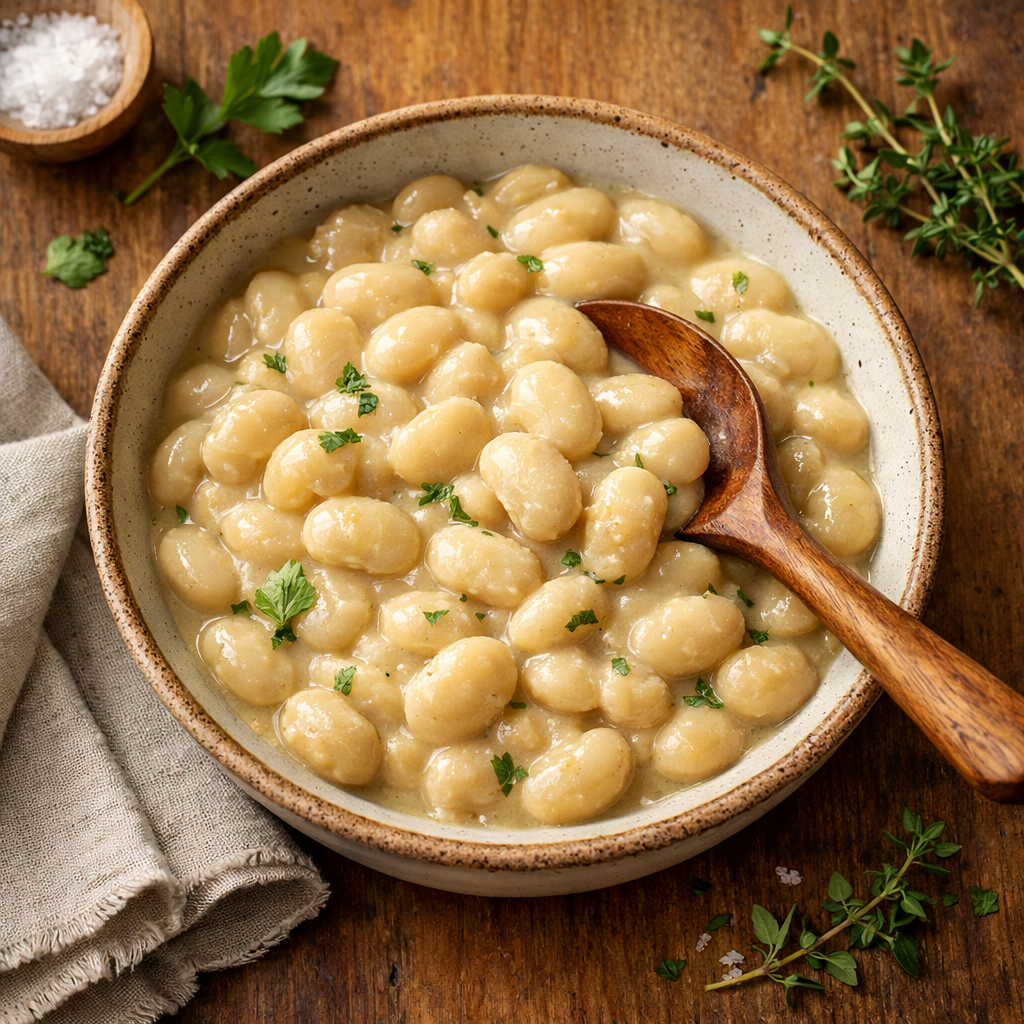Before last year, I wasn’t a huge fan of zucchini. I knew it existed. I’d seen it in the grocery store, passed it by without much thought, and maybe had it spiralized once at a friend’s dinner party. But zucchini seeds? That was a whole other level—one I never expected to explore. That is, until my dad and stepmom came to visit.
My stepmom, bless her green thumb, is the type of woman who brings gardening gloves and packets of seeds in her carry-on. So when she pulled out a tiny envelope labeled “Black Beauty Zucchini,” I smiled. She was completely serious. “You’ve got the space. You’ve got the sun. Let’s grow something!”
And just like that, I found myself curious—about zucchini, about its seeds, and about why people love growing their own food from scratch. This article is the result of that curiosity, a deep dive into the tiny, pale seeds that have so much potential packed into them.

What Are Zucchini Seeds, Really?
I did research about Zucchini seeds and found out it came from the Cucurbita pepo species, the same botanical family that gives us pumpkins, squash, and gourds. When dried, they’re small, flat, and off-white. You’d be forgiven for mistaking them for pumpkin seeds at a glance.
But don’t let their unassuming appearance fool you—zucchini seeds are the key to one of the most versatile summer squashes around. Once you pop them into the ground, they can grow into dozens of varieties, each with its own flair. There’s Black Beauty, a dark green classic. Then there’s Golden Glory, which brings a splash of sunshine to your garden. You’ve got the heirloom Italian types like Romanesco, known for its beautiful ribbing and nutty flavor, and even quirky round ones like Eight Ball.
One of the fun debates I stumbled upon is heirloom versus hybrid seeds. Heirlooms are open-pollinated and pass their traits generation to generation, while hybrids are bred for traits like disease resistance or yield. My stepmom brought heirlooms, insisting they taste better—and who was I to argue?

Tiny Seeds, Big Nutrition
I wasn’t aware that zucchini seeds were actually nutritious. Most of us, myself included, would just toss them in the trash. Who would have thought these little gems are packed with essential nutrients? I’ll dive into that in the next section.
Here’s the breakdown for 100 grams of raw zucchini seeds:
- Calories: ~400
- Protein: 30g
- Fat: 35g (mostly healthy fats)
- Fiber: 10g
- Vitamin B1 (Thiamine): 35% DV
- Iron: 60% DV
- Magnesium: 70% DV
- Potassium: 25% DV
It’s like nature’s trail mix in seed form. My first time roasting them with olive oil and sea salt was surprisingly satisfying. Crunchy, flavorful, and not far off from pumpkin seeds—only these came from my own soil.
From Seed to Fruit: Health Benefits Beyond the Garden
Zucchini seeds might not look like much, but they’re surprisingly nutritious. And the zucchini they grow into has plenty to offer too. Zucchini is full of vitamins and minerals, but still light on calories. Its fiber also helps with digestion and supports heart health:
Eating zucchini regularly supports:
- Digestion: Thanks to its water and fiber content.
- Eye Health: With antioxidants like lutein and zeaxanthin.
- Immune Support: Due to vitamin C and phytonutrients.
- Blood Sugar Control: Soluble fiber helps regulate spikes.
You don’t even need to peel it! Most of the nutrition lives in the skin. Once I started slicing it into my stir-fries, soups, and yes—even zucchini bread—I realized it was doing more than just adding bulk to my meals.
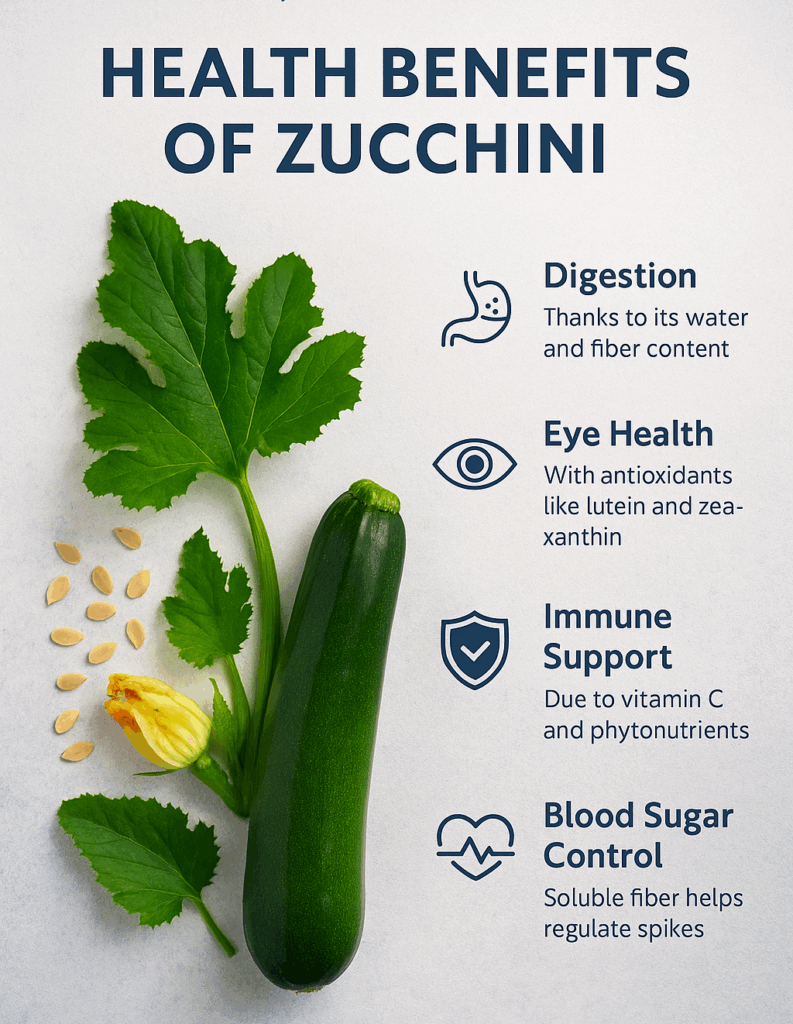
Planning to Grow Zucchini in My Small Garden
In my previous article, I shared how I discovered round zucchini and what makes them so unique. Lately, I’ve been thinking about taking it a step further by growing regular zucchini—the classic long green kind you see at the farmers’ market.
I haven’t planted any yet, but my stepmom did. It’s something I’m genuinely excited to try in the coming months. I’ve been looking at my small garden out back and figuring out how to make room for zucchini alongside what I’m already growing. It’s not a huge space, but it gets good sun, and I think I can definitely fit a few zucchini plants in there.
At this point, I’m still just figuring things out—looking into when to plant, what kind of zucchini is easiest to grow, and how to keep the plants alive once they’re in the ground. So far, I’ve picked up that the soil needs to be warm—around 65°F or so—and that planting the seeds straight into the garden might be the easiest route for a beginner like me.
Professional seed starting requires controlled heat and optimal lighting conditions. This complete propagation system features an integrated T5 grow light, heating mat, and vented humidity dome that creates the perfect microclimate for zucchini seeds. The built-in light channels and adjustable vents give you professional-grade germination rates—this is the kit that turns beginners into successful gardeners.
I’m also preparing myself for the care routine—regular watering, spacing them properly, maybe even learning how to hand-pollinate if the bees in my area don’t show up for the job. From what I’ve gathered, zucchini can be surprisingly rewarding to grow, especially in a small garden. Fingers crossed I’ll have my first harvest before the season’s over.
Complete Seed Starting System – Heat Mat, Grow Light & Vented Dome Kit
Transform your gardening with this all-in-one propagation solution that includes everything needed for successful seed starting. The integrated heat mat provides optimal soil temperature while the high-output T5 grow light ensures healthy seedling development. Perfect for both beginners and experienced gardeners looking to maximize their growing success indoors.

Super Sprouter Premium Heated Propagation Kit for Starting Seeds or Cuttings, Includes Heat Mat, Tray, Grow Light, and More
- Super Sprouter 7 in Ultra Clear Vented Dome with built in light track channels
- Super Sprouter 18 in high output T5 fluorescent grow light designed for the channeled dome
- Super Sprouter Double Thick 10 x 20 inch tray with no holes
- Super Sprouter heat mat/li>
Choosing the Right Zucchini Seed Variety
If you’re as new to this as I was, picking a variety can be confusing. Here are a few favorites I researched and (eventually) tried:
- Black Beauty: The classic dark green variety; very productive and fast-growing.
- Golden Zucchini: Bright yellow and slightly sweeter.
- Cocozelle: Striped and slender, with an old-world flavor.
- Eight Ball: Round and adorable, perfect for stuffing.
- Romanesco: Deep green with ridges and a nutty flavor.
- Rika F1: A hybrid known for disease resistance—perfect if pests make you paranoid.
Start from the basics. Black Beauty is forgiving and nearly foolproof for beginners like me. But if you want fun shapes or unique colors, explore the others!
How to Harvest and Save Zucchini Seeds (The Right Way)
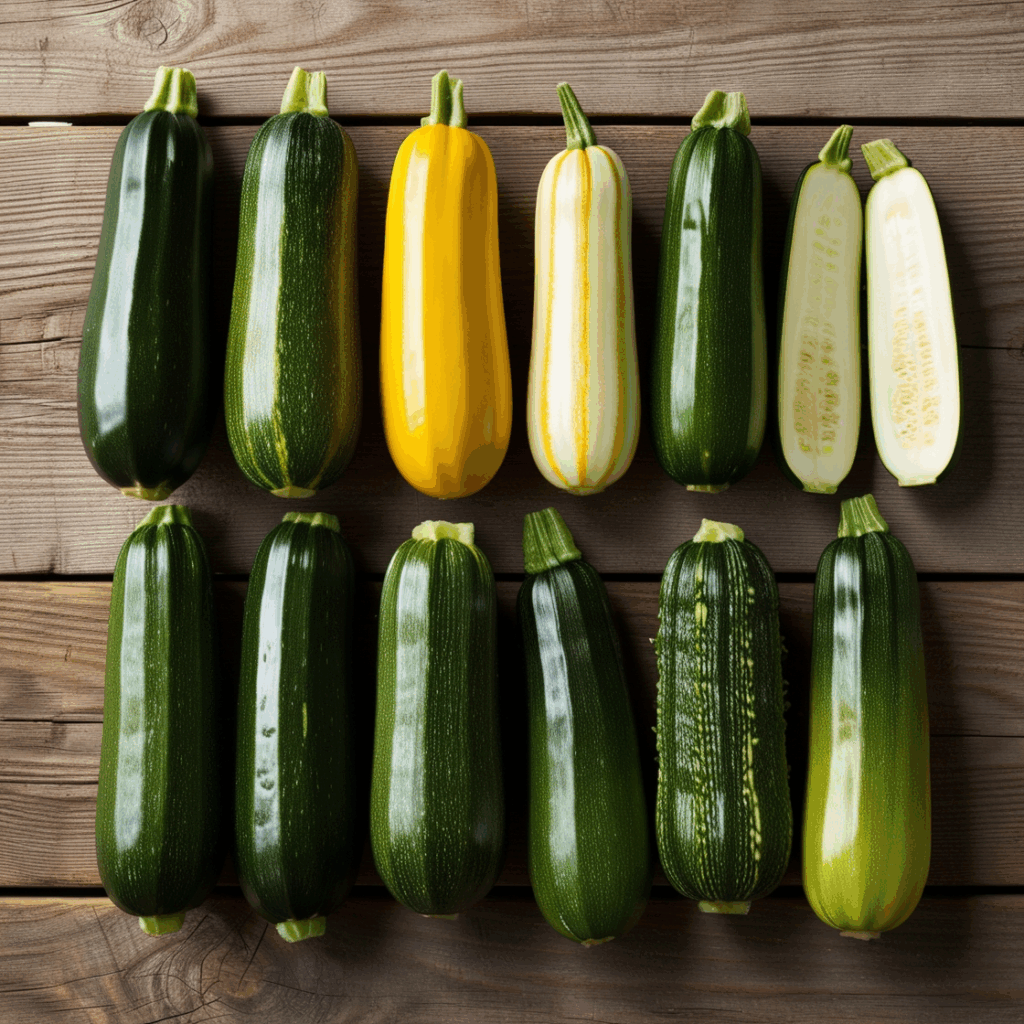
I forgot to mention this earlier—but along with my stepmom’s advice, I also got some great tips from a local farmer I chatted with at the market. We ended up talking about growing and harvesting zucchini, and he walked me through some techniques I hadn’t considered. His explanation of how to save seeds really sparked my curiosity. What started as a casual chat turned into a real interest in the whole growing process.
According to him, the key is letting the zucchini get way bigger than you’d normally eat. He joked that it should look like something you’d win a prize for at a county fair—big, bloated, and way past its prime for cooking. That’s when the seeds inside are fully mature and worth saving.
Once you’ve picked it, you slice it open, scoop out the seeds, and separate them from all the stringy bits. Then rinse them well, spread them out on a paper towel, and let them dry completely for a few days. When they’re fully dry, you just store them in a labeled container or jar and keep them somewhere cool and dry. If you do it right, they can last for several years.
I’m still working up to trying this myself, but there’s something appealing about planting seeds you personally collected and dried. It adds a personal touch that goes beyond regular gardening—you’re creating continuity between growing seasons using your own efforts.
Yes, You Can Eat the Seeds
When I first heard “zucchini seeds are edible,” I pictured trying to crunch on them raw. Not ideal. But roasted? Total game-changer.
Roasting zucchini seeds to golden perfection requires even heat distribution and proper air circulation. This restaurant-quality roasting pan features heavy-gauge 18/10 stainless steel construction that eliminates hot spots, while the included V-shaped rack ensures seeds roast evenly from all sides. It’s the difference between mediocre snacks and addictive, perfectly crunchy seeds that disappear as fast as you make them.

All-Clad Specialty Stainless Steel Roaster with Nonstick Rack 11×14 Inch Oven Broiler Safe 500F Roaster Pan, Pots and Pans, Cookware Silver
- Small 11-by-14-inch roasting pan with removable V-shaped nonstick roasting rack
- Single-ply polished stainless-steel construction with warp-resistant bonded base
- Highly polished 18/10 stainless-steel cooking surface offers superior stick resistance and easy maintenance, plus won’t react with food
- More durable than traditional pans for a lifetime of use; stainless-steel handles permanently secured with stainless-steel rivets
Here’s how I do it:
- Clean and dry the seeds from fresh zucchini.
- Toss with a little olive oil, salt, and paprika.
- Roast at 350°F for 15–20 minutes.
They’re nutty, crunchy, and a great topping for salads, soups, or even yogurt parfaits. You can grind them into baked goods for extra protein or mix them into granola. Who knew something so overlooked could taste this good?
My Go-To Healthy Zucchini and Roasted Seed Salad
After all my experimenting with zucchini and its seeds, I developed this powerhouse salad that brings everything together. It’s become my signature dish when I want to show off my garden bounty and pack in serious nutrition.
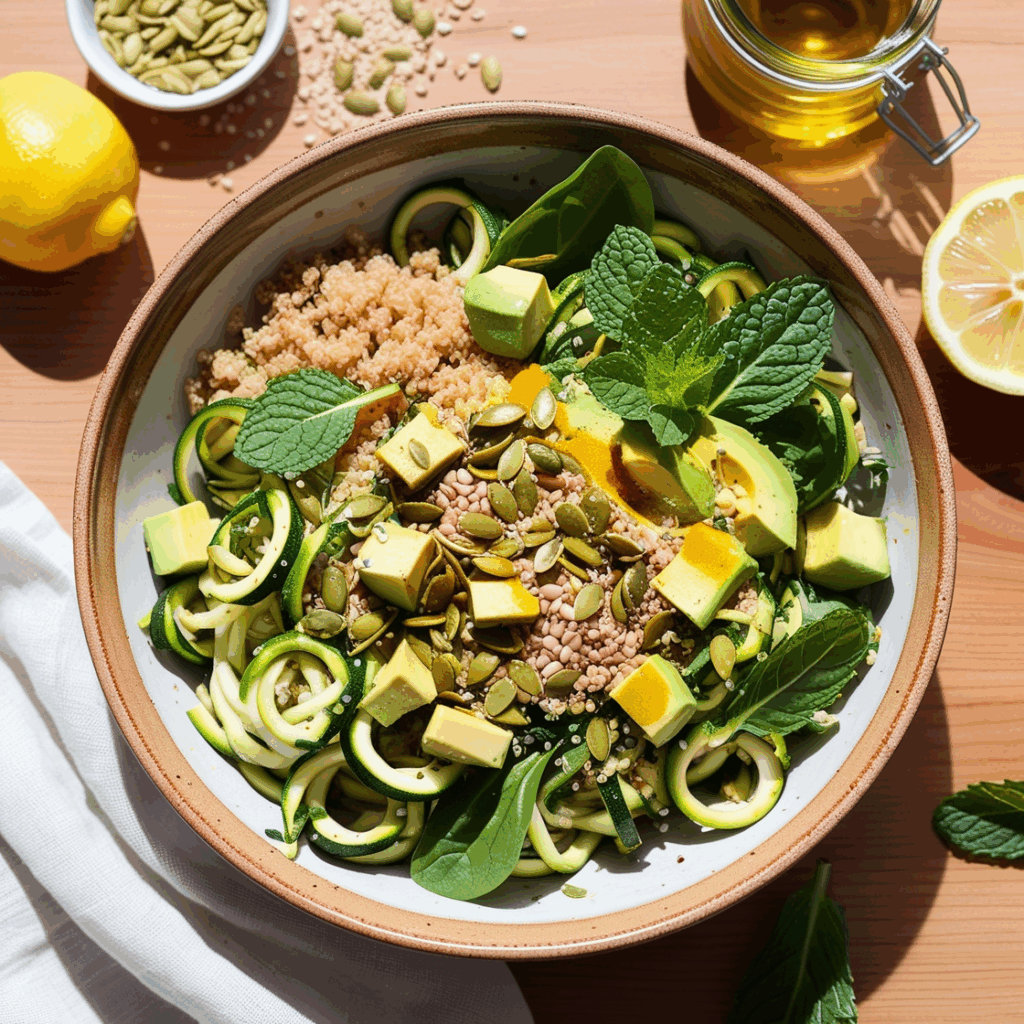
Ingredients:
- 2 medium zucchinis, spiralized or julienned
- 1/2 cup roasted zucchini seeds (prepared as above)
- 2 cups baby spinach
- 1/2 cup quinoa, cooked and cooled
- 1/4 cup hemp hearts
- 1/2 avocado, diced
- 1/4 cup fresh mint leaves, chopped
- 2 tablespoons pumpkin seeds (for extra crunch)
- 2 tablespoons extra virgin olive oil
- 1 tablespoon fresh lemon juice
- 1 teaspoon raw honey
- 1/2 teaspoon turmeric powder
- Himalayan pink salt and black pepper to taste
Transform your zucchini prep with restaurant-level precision. This professional mandoline creates up to 21 different cuts with razor-sharp Japanese steel blades that slice through zucchini effortlessly—from paper-thin rounds for elegant layered dishes to perfect julienne strips for salads. The spring-loaded food holder and safety features let you create uniform, beautiful cuts faster than any knife ever could.

OXO Good Grips Chef’s Mandoline Slicer 2.0 & Swivel Peeler
- Product 1: Indicator window clearly displays Thickness setting from above in inches and millimeters
- Product 2: Swiveling twin blades with flexible action easily peel potatoes, apples and other tough skinned fruits and vegetables
- Product 1: Spring-loaded food holder features a wide rim to protect fingers and stores on underside of mandolin
- Product 2: Soft, oversized handle designed for repetitive strokes
Instructions:
- Combine the spiralized zucchini, spinach, and cooked quinoa in a large bowl.
- Add the roasted zucchini seeds, hemp hearts, diced avocado, and fresh mint.
- Whisk together the olive oil, lemon juice, honey, turmeric, salt, and pepper for the dressing.
- Drizzle the dressing over the salad and toss gently.
- Top with pumpkin seeds for extra texture.
- Let it sit for 10 minutes to allow the flavors to meld before serving.
This salad is packed with plant-based protein, healthy fats, fiber, and antioxidants. Plus, it’s a celebration of everything I love about growing my own food—fresh, nutritious, and completely satisfying.
Zucchini Troubles (And How to Fix Them)
Let’s talk about pests. The first time I saw powdery mildew on my plant leaves, I panicked. White splotches? In my precious garden?
Turns out, it’s common—especially in humid climates. I trimmed the infected leaves, made a baking soda spray (1 tbsp baking soda + 1 tsp dish soap + 1 gallon water), and stayed vigilant.
Other culprits:
- Squash Vine Borers: Sneaky pests that tunnel into stems. Use floating row covers early on.
- Aphids: Tiny green bugs that cluster on new leaves. I sprayed them off with water and introduced ladybugs.
- Cucumber Beetles: Striped or spotted. Neem oil helped, but covering plants early in the season is even better.
Choosing disease-resistant varieties like Rika F1 helps a lot, especially if you’re gardening in unpredictable weather zones.

Around the World with Zucchini
Did you know zucchini has its own festival? In Obetz, Ohio, the Zucchini Festival includes parades, pageants, and of course—zucchini-based everything. Italy (where zucchini is called zucchino, meaning “little squash”) incorporates it in pasta dishes, while in Turkey, it’s stuffed with rice and herbs.
And get this—there’s a world record for the longest zucchini ever grown: 8 feet, 3.3 inches!
That’s… a lot of spiralized noodles.
Why I’m Team Zucchini Seeds Now
I never set out to be a zucchini gardener. I wasn’t even looking to get into seeds. But one visit from my stepmom changed all that. She handed me something so small, yet so full of potential. And now, zucchini seeds are part of my routine, my meals, and weirdly—my identity.
They’ve taught me patience, resilience, and that even a complete beginner can grow something real and nourishing. From roasted seeds to garden-fresh stir-fries, it’s a full-circle kind of joy.
If you’ve never grown anything before, zucchini seeds are a great place to start. They don’t ask for much—just sun, water, and a little curiosity.
And who knows? Maybe you’ll find yourself saving seeds, baking zucchini bread, or pulling 8-foot squash from your garden someday, too.
Here’s what I want you to do: Begin with the basics. Grab a packet of Black Beauty zucchini seeds this weekend. Find that sunny spot in your yard, balcony, or even a large container. Plant them with the same curiosity my stepmom sparked in me. Take photos of your first seedlings, your first blooms, your first harvest. Share your journey—tag me, tell your neighbors, inspire someone else to try something new.
What I’ve discovered through this experience goes beyond the actual harvest. Growing your own food creates a meaningful connection to the earth and provides insight into our food systems. It builds confidence and proves that gardening skills are more accessible than most people realize. These seeds showed me that cultivation is possible for anyone—including those of us who previously ignored zucchini at the market.
So go ahead. Get your hands dirty. Let those zucchini seeds surprise you too.
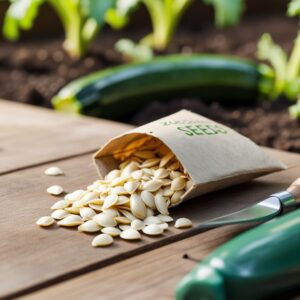
*We may earn a commission for purchases made using our links. Please see our disclosure to learn more.

